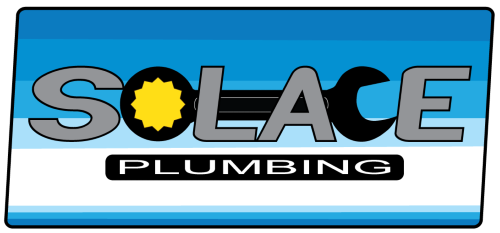Early Detection of Slab Leaks: Save Time and Money
A slab leak doesn’t announce itself with a dramatic flood or a burst pipe.
A slab leak doesn’t announce itself with a dramatic flood or a burst pipe. It works quietly beneath the surface, slowly creating damage that leads to expensive repairs and structural headaches. Water leaking under the foundation weakens concrete, seeps into flooring, and causes hidden moisture issues that spread before anyone realizes something is wrong. Early detection makes all the difference, preventing unnecessary costs while keeping a home in top shape.
Unexplained Water Usage Signals Trouble
Water bills often tell the first chapter of the slab leak story. When daily routines stay the same, but the bill climbs higher each month, a hidden leak may be to blame. Slab leaks allow water to escape continuously, increasing usage even when faucets, appliances, and irrigation systems operate normally. Checking the water meter when nothing is running provides a simple way to confirm an issue. If the dial keeps moving, water is leaking somewhere in the system.
Hot Spots on the Floor Suggest a Hidden Leak
A warm section of flooring, especially in rooms without radiant heating, often indicates a hot water line leaking beneath the slab. Tile, hardwood, and carpeted areas may feel unexpectedly warm underfoot, revealing moisture collecting below. Walking barefoot offers the easiest way to notice these temperature changes, which often go unnoticed until the leak has already caused significant damage.
Changes in Water Pressure Disrupt Daily Routines
Water pressure drops when part of the supply escapes before reaching faucets, showers, or appliances. When pressure weakens without a clear cause, such as municipal work or a known pipe issue, an underground leak could be responsible. Early detection prevents the strain of inconsistent pressure and avoids further stress on the plumbing system.
Cracks in Flooring and Walls Reveal Structural Damage
A shifting foundation often points to water undermining the soil beneath a home. Leaking water erodes the ground, causing the slab to move and crack under pressure. Small hairline fractures in flooring or walls may seem minor at first, but as the leak continues, they widen and multiply. Foundation issues become more expensive to fix over time, making early detection crucial to preventing major repairs.
Mold and Mildew Thrive in Damp Conditions
Unwanted moisture creates the perfect conditions for mold and mildew. Even without visible water damage, a musty odor signals excess humidity in the air. Slab leaks introduce steady moisture beneath flooring, allowing mold to grow behind walls, under carpets, and in places that remain unseen until the problem spreads. Mold affects air quality and can lead to health concerns if ignored.
Damp Carpets or Warped Flooring Suggest Moisture Buildup
Water seeping through the foundation doesn’t always stay hidden. Flooring materials absorb moisture over time, leading to warped wood, damp carpets, and unexplained staining on tile grout. Water damage spreads gradually, making early detection essential for minimizing long-term repair costs.
Standing Water Near the Foundation Points to Trouble
Leaks beneath the slab don’t always stay confined to the home. Water often travels, pooling near the foundation or creating damp spots in the yard. If puddles appear despite dry weather, a hidden plumbing issue may be saturating the surrounding soil. Excess water weakens the foundation and contributes to erosion, leading to further structural concerns.
Listening for Hidden Water Sounds Helps Catch Leaks Early
The sound of running water when everything is turned off often signals a hidden leak. Faint hissing, dripping, or rushing noises beneath the floor suggest water is escaping through cracks in the pipes. Paying attention to these subtle signs helps detect leaks before they turn into larger issues.
Modern Detection Methods Identify Leaks Without Guesswork
Slab leaks don’t have to mean tearing up flooring or drilling into concrete. Advanced detection tools make it possible to locate leaks with precision, reducing unnecessary disruption.
Acoustic listening devices pick up the faint sounds of water escaping, pinpointing leaks without invasive digging. Thermal imaging cameras reveal temperature changes caused by moisture buildup, while electronic sensors detect irregularities in water flow. Pressure testing isolates sections of the plumbing system, confirming the presence of a leak and narrowing down the affected area. Video pipe inspection offers a real-time view inside plumbing lines, identifying cracks, corrosion, and blockages that contribute to slab leaks.
Preventing Major Repairs Through Early Detection
Slab leaks never resolve themselves, and delaying detection leads to higher repair costs, wasted water, and structural instability. Staying alert to changes in water usage, flooring conditions, and household humidity prevents small leaks from turning into expensive problems. Professional slab leak detection provides a quick, accurate diagnosis without unnecessary demolition, preserving both time and money.
Taking action early keeps homes dry, stable, and free from the complications that come with hidden water damage. By recognizing the warning signs and using modern detection techniques, homeowners avoid costly repairs and maintain the integrity of their foundations. A little vigilance today prevents major headaches tomorrow, keeping everything running smoothly beneath the surface.
Solace Plumbing has 26 years of experience offering comprehensive plumbing solutions to Gilbert, AZ, homeowners. We specialize in gas line install and repair, sump pump installation and repair, leak detection and repair, sink installation and repair, and toilet installation and repair. Licensed and insured. 24/7 emergency plumbing services and flexible virtual consultations available. Call today!

